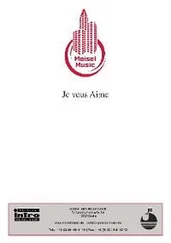I got up early on mission day. I was well rested, but anxious to get on with it. I didn’t feel like eating, but fresh air would help. Lunch was finished anyway and the empty wardroom revealed a ship hard at work. The eight-hours-about shifts were well established. There was no sitting around drinking tea and reading last month’s newspaper. It was work or sleep for the 310 sailors of the ship’s company. I made a cup of tea and negotiated the airlock on to the quarterdeck. The hot, damp Mediterranean air surprised me. It had been more than a week since I’d been outside with the sun up and I had to half shut my eyes to deal with the intense blue and white burning my retina. As I got used to the light I looked around me. The quarterdeck was empty. A wooden bench, the sort you might see in a garden, was pushed up against the aft railings, an incongruous piece of furniture at sea. I made my way over, sat facing aft and the wake, and closed my eyes looking for peace. The deep rumble of the engines resonated through my body, the sunlight pushed against my eyelids and the heavy, humid air shut out escape. There is nowhere in a ship to escape.
I needed to get the mission going. That afternoon, in the flip-flop, we finalized the plan and discussed the variables, I wrote some notes to brief later and we waited for dark. Just before supper on Friday, 3 June I stood up in front of a packed aircrew briefing room and said, ‘These are Orders for an Apache strike mission into Libya…’ Behind me the slide projected on to the wall read ‘Machete 1&2, Time on Target 2245hrs’.
In the airless, sweating, half-dark room forty soldiers and sailors listened as the ship’s Principal Warfare Officer briefed Ocean ’s manoeuvre plan, Wings detailed the flight deck activity and the Intelligence Officer described the situation on the ground and what might be out there to meet us. Then it was my turn. I described in detail what our formation would look like – the heights and speeds, how, where and with what each target would be struck, our ‘actions-on’ and our plan of escape if we went in. The whole thing took forty minutes, and the four of us who had lived the plan for the last three days just wanted out on to the flight deck and on with the low-level night charge into Libya. The wait was excruciating, but we were now just minutes from the off.
At 1800hrs Ocean went into communication shutdown, effectively switching off all unclassified messaging to the outside world. With the brief complete and all agreed it was a ‘Go’, the aircrew had their own private moments of preparation. Down on 6 deck John Blackwell got himself ready for the mission. He had already wrestled through the pain of writing a last letter to his family, just as he had done in 2003 in Iraq and again in Afghanistan more recently. All that remained was to prepare for the fight. He emptied his pockets. A photograph of his family and a St Christopher chain, given to him by his mother, were the last things out. He tucked the photograph into a drawer and slipped the St Christopher back into his pocket. Everything else was stripped out. No identifying objects, nothing that would link him to his work, in case the worst was to happen. Then he filled his pockets with morphine syrettes and tourniquets. Finally he folded his Libya escape map into a thigh pocket and left his cabin.
An hour before take-off we met in the flip-flop. Our personal weapons were laid out, mission data cartridges were signed for and maps were checked. A last pat-down confirmed no personal items were being carried, then we loaded up and made our way up towards the flight deck. On the way we donned our load-carrying vests and body armour, checked our personal ammunition, signed for the aircraft and then stepped out through the airlock on to the hot, dark flight deck.
Reuben and JB had already got both aircraft up on auxiliary power with all systems run up and working perfectly. I walked around the outside of the aircraft for a final check that all was well. Our aircraft sat, offset to port, on the forward spots, eight Hellfire and the gun pointing out to sea – Wings and Big Shippers had arranged the armed at night clearances just in time.
We climbed into our cockpits, stowed our carbines and ammo bags and strapped in. On the left side of my armoured seat I plugged the microphone lead into my flying helmet and, with a separate lead, connected the sensors on my flying helmet. On my right I attached the Helmet Mounted Display (HMD), swivelled the optical lens over my right eye and began to settle that eye into absorbing the forty-plus pieces of information and symbology now being projected into my head. Four button pushes of the Multi Purpose Display (MPD) activated the sensors confirming that the aircraft knew where my head was. This now allowed me to slave either sights or the gun to my head, effectively making those systems point where I was looking if I required it.
With both hands following a rehearsed routine of shortcut fixed buttons, I flicked through the scores of pages on the MPDs checking the flight instruments were calibrated, the radios were tuned to the right frequencies, the weapons were correctly configured and the target information was right. Reuben and JB had done it already; all we had to do was watch the clock and wait until it was time to launch.
The clock counted down to eight minutes to launch. It was time to get the engines up and the rotors turning. Ocean and her aircraft made no radio transmissions prior to launch. All flight deck communications were done by light and hand signals and we kept to a prearranged timeline for all our activity. Old fashioned pencil, paper and runner communicated any deviation. A brief flash of the strobes and a thumbs-up from the marshaller, and both aircraft began to rumble, engines up to full power. The steady high frequency hum of the flight deck was replaced by the aggressive roar of two armed aircraft readying for action. As the roar settled and my left eye interrogated the engine systems page, confirming oil temperature, hydraulic pressure and torque settings were good, I noticed in my right eye that Ocean was changing course. The coordination between Wings in Flyco, just 20m away overlooking the flight deck, and the Officer of the Watch, was working. They were on the timeline. Engines up meant only five minutes to launch, and Ocean turned on to a flying course and headed into the wind.
I briefed John on our immediate actions if we had a drama on takeoff: ‘Safe single engine speed is 44 knots. If we get an engine failure you’ll jettison the Hellfire, I’ll bang out the canopy, you dive the aircraft to gain speed.’
‘Got it. Ready when you are, boss,’ he replied.
‘Okay, we’re all set.’ I flicked a handheld torch on and off, signalling to the marshaller that we were ready to lift, ready to go to war.
The marshaller looked fore and aft, pointed at me with his wands and signalled the aircraft to leave the deck.
‘FMC in.’ I engaged the flight stabilization system, announcing to John that our final check was done and he was clear to get us up and away.
He called, ‘Lifting now’ and gently raised the collective lever while steadily pushing the left pedal, countering the torque reaction and keeping the aircraft straight. We became light on the wheels, and, with the torque rising towards 80 per cent, we left the deck.
My left hand hovered over the canopy jettison switch. Each eye was focusing on different information. My left eye interrogated the engine systems page on the MPD, hunting for any change from the norm, while my right eye interpreted the HMD symbology of our movement. All was good, time to get going. I guided John through the take-off sequence just as we had been taught, initially in the simulator, and had practised for the previous five weeks.
Читать дальше












